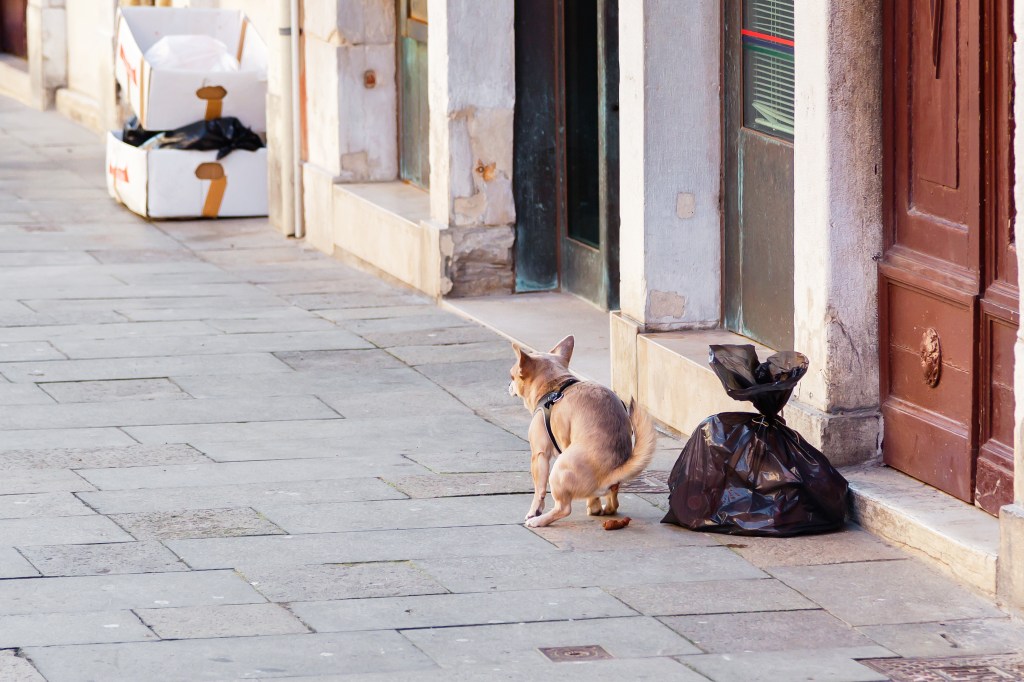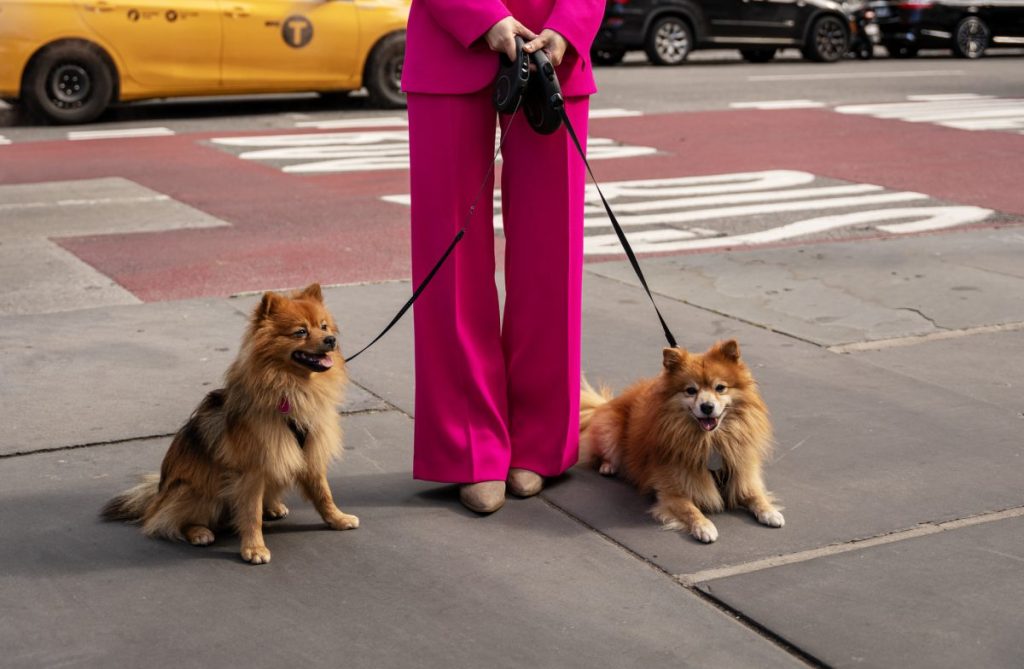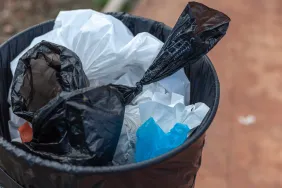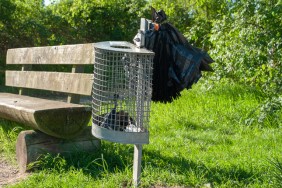New York City’s Upper East Side Neighborhood has long been known for its posh homes and affluent residents. However, lately, its become rather infamous for its filthy sidewalks littered with dog poop.
That’s right, the Upper East Side is grappling with a dog poo crisis. The problem is courtesy of inconsiderate dog owners who don’t bother cleaning up after their canines when they defecate on sidewalks and street pavements. As a result, residents in the area risk carrying home unwanted visitors who hide underneath their shoes in microscopic fecal matter.
According to Gothamist, New York City’s 311 hotline lodged over 2,000 dog poop-related complaints in 2022 alone. The surprising call volume is, perhaps, a clear indication of how rampant the issue has become.
It’s reported that the dog poo menace only grew worse after the early days of the Coronavirus pandemic. During the height of the pandemic, many New Yorkers opted to bring home canine companions to help them cope with lockdowns. Eventually, this translated to an increased dog population after mandatory isolation periods ended. Unfortunately, it also contributed to a surge in irresponsible dog owners.
Sadly, what many fail to realize is unscooped poop is not only an obvious eyesore but also a health hazard. A recent study carried out by researchers from the Upper East Side’s Marymount Manhattan College revealed just how filthy the neighborhood’s sidewalks are, sparking health concerns.
‘Poo-lution’ in the Upper East Side: What study findings say

The research team was led by Alessandra Leri, a chemistry professor. Scientists took to Upper East Side streets to collect water samples from puddles scattered on sidewalks.
Interestingly, the researchers didn’t focus on puddles with visible signs of dog feces; they only sampled puddles that appeared “poop-free.” This is because many assume such puddles are “safe” from fecal matter, forgetting that unscooped dog poop sometimes ends up getting washed away into standing water sources.
The team also extracted samples from underneath volunteer students’ shoes. Additionally, they collected samples from carpeted and uncarpeted indoor floors throughout the college.
Their goal? To measure the level of canine fecal bacteria in the samples.
In particular, researchers wanted to determine the level of enterococci — a type of bacteria that also indicates the presence of harmful fecal pathogens, such as E. coli — in the collected samples. Enterococci live in a dog’s intestinal tract and are dispelled through the stool. In fact, the Environmental Protection Agency (EPA) often tracks the presence of enterococci in a water source to determine if the water has fecal contamination.
After examining the samples, the researchers made some shocking findings. The team found roughly 30,000 enterococci bacterial cells for every 100 ml of puddle water. To emphasize how serious this level of fecal bacteria contamination is, CBS News revealed the EPA would shut down a public beach if they found just 100 cells of the bacteria in 100 ml of water.
Moreover, the research team discovered:
- 22,000 enterococci cells per square meter of a carpeted entryway floor.
- 100 enterococci cells per square meter on an uncarpeted entryway floor.
- From as low as 15 to as high as 2,000 plus enterococci cells on shoe soles.
Health risks of carrying canine fecal bacteria into your home

Following the worrying findings, Professor Leri advised people to always leave their shoes at the door before entering their homes. She explained that by doing so, they’ll avoid spreading fecal bacteria all over their residence.
“The easiest thing you can do to avoid tracking it into your home is to remove your shoes at the doorway and leave them there,” Leri shared.
This practice is especially important for households with pets and toddlers, who are likely to spend time on contaminated carpets or eat stuff from floors carrying the bacteria.
According to the Canadian Public Health Association, common dog poo bacteria like E. Coli can result in symptoms such as vomiting, stomach cramps, fever, nausea, and diarrhea in humans. Shockingly, E. coli infection can even lead to death for people with weak immune systems.
Moreover, dogs who ingest stuff from contaminated floors risk getting E. coli infection. In canines, this illness causes various symptoms, among them rapid heart rate, diarrhea, vomiting, appetite loss, lethargy, dehydration, and depression.
The New York City Council’s campaign for cleaner neighborhood streets

Like other cities, New York has a dog law in place requiring residents to clean up after their canines and dispose of the poo correctly. As per the existing ordinance, one can choose to carry the poop with them in a non-leaking, well-sealed bag for disposal in their own toilet or a private trash bin. Alternatively, one can dispose of the feces in a designated DSNY litter bin. The New York Department of Sanitation oversees the enforcement of this law, which attracts a $250 fine if violated.
Despite these regulations, many Upper East Side residents continue to neglect their dutiful responsibility of picking up their dog’s waste in public places.
To tackle the stinky behavior, the city council recently unveiled a new campaign dubbed “Curb Your Dog.” As part of the campaign, the council announced they’ll install over 250 aluminum signs. Each will bear the slogan “Clean Streets for All, Pick Up After Your Pup!” All of them will be placed along Upper East Side streets and sidewalks.
Julie Menin, a member of the New York City Council, hopes these signs will prompt more dog owners to be responsible.
“There are serious health implications for this,” Menin told Gothamist. “But it’s also a quality of life issue, people don’t want to step in this. This is just common courtesy to pick up after your dog.”
In 2013, New York’s Department of Transportation removed all “Curb Your Dog” signs as they had completely faded. Unfortunately, the city never replaced these signs.
Furthermore, the city council is considering adding “curb your dog” waste bags throughout sidewalk litter bins. This, they believe, will encourage residents to clean up after their canines.
The Upper East Side and its uncertain future tackling the dog poop problem
Despite increasing reports of irresponsible Upper East Side dog owners leaving their canines’ poop on sidewalks, there is hope for a cleaner, poop-free neighborhood. It’s true many residents continue to ignore the fact that cleaning up after their dogs is not only a common courtesy but a legal requirement. However, the New York City Council is confident their campaign to push dog owners to clean up their act will make a difference.
There is, of course, much at stake in addressing the foul problem plaguing the Big Apple. In particular, leaving dog waste on the streets threatens public health since people can accidentally step on the bacteria-loaded poop. As a result, fecal matter can end up in residences, schools, local businesses, and more. Even worse, the traces of dog poop can put other pets, small children, and immunocompromised New York City dwellers at risk of contracting serious illness.
Now, it’s up to Upper East Side residents to curb the dog poop problem before it’s too late. The solution is, and can quite literally be, in their hands.









